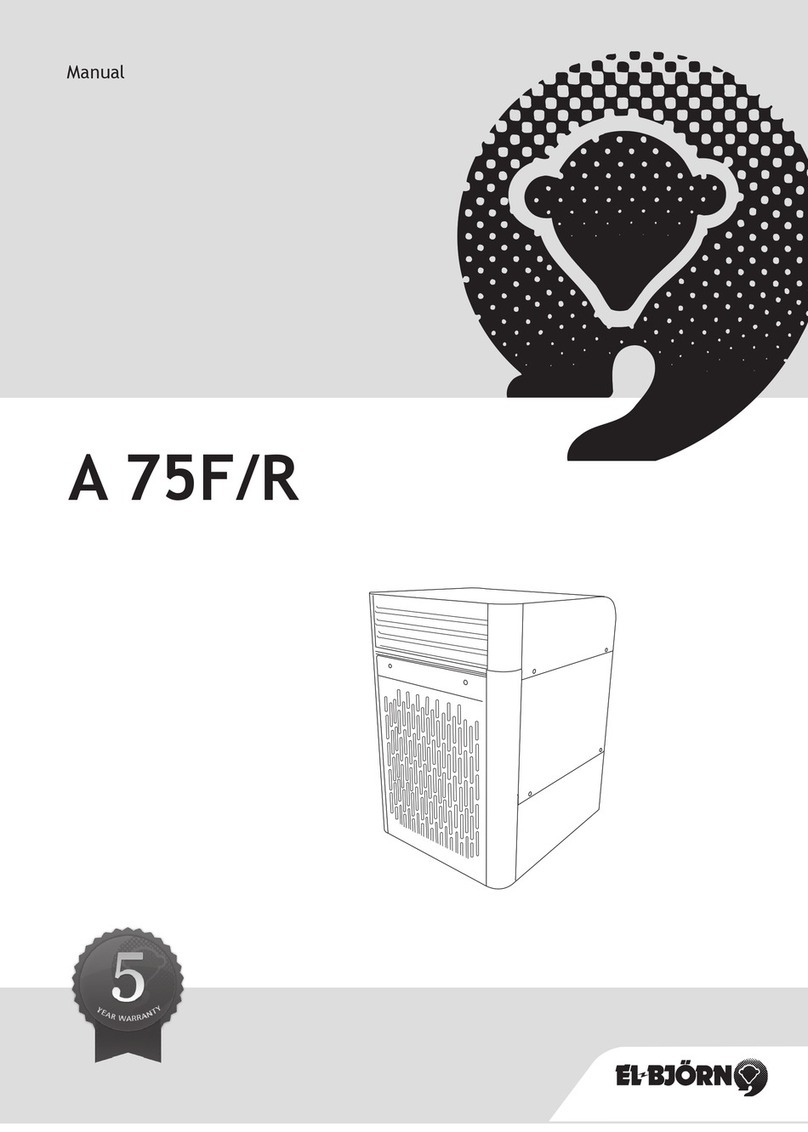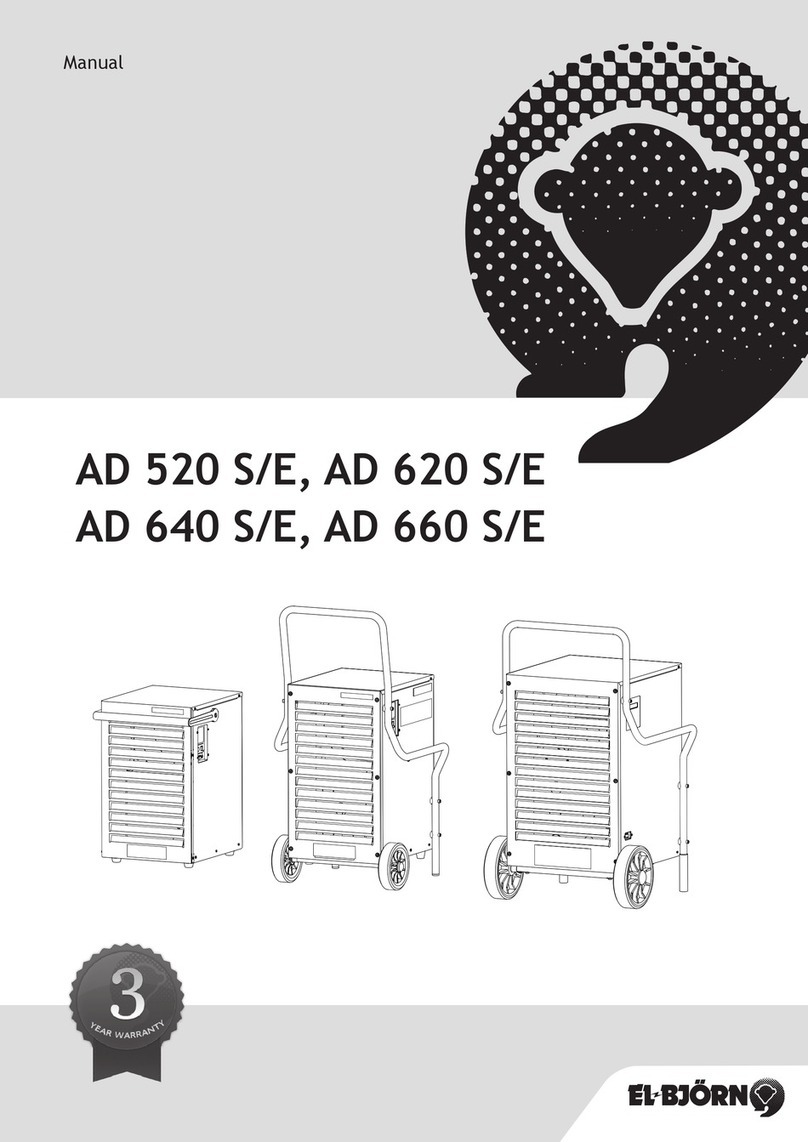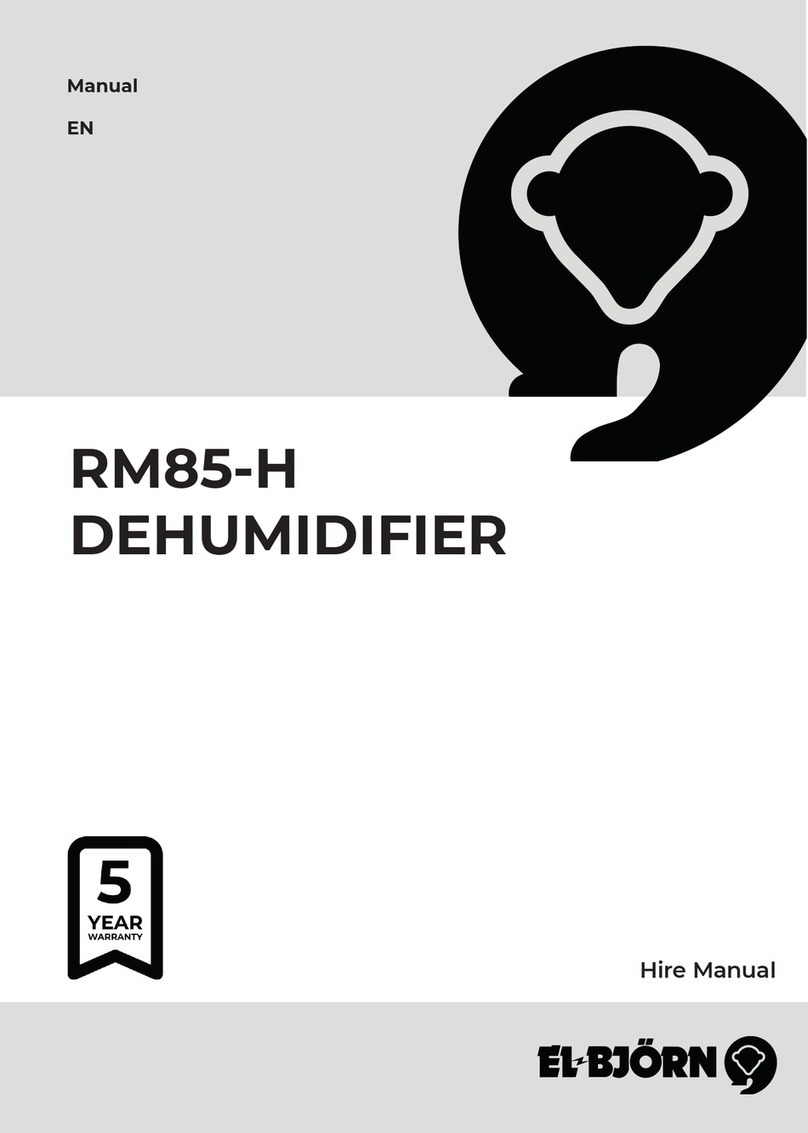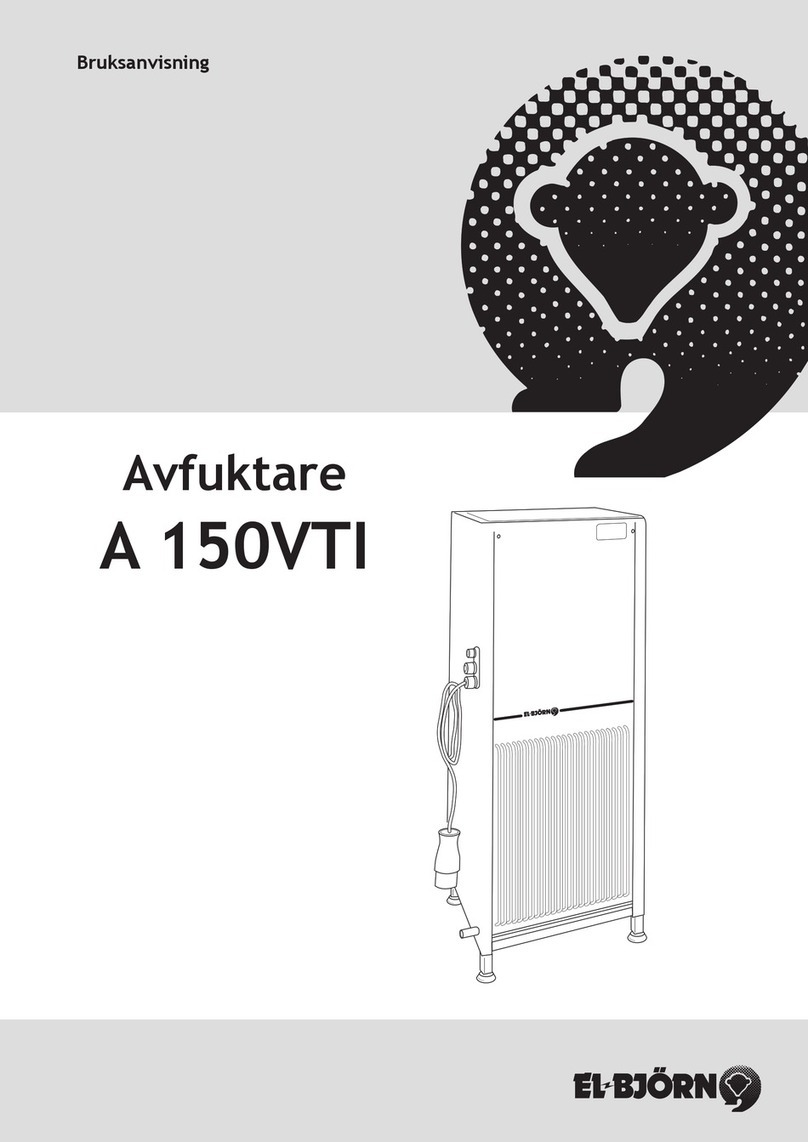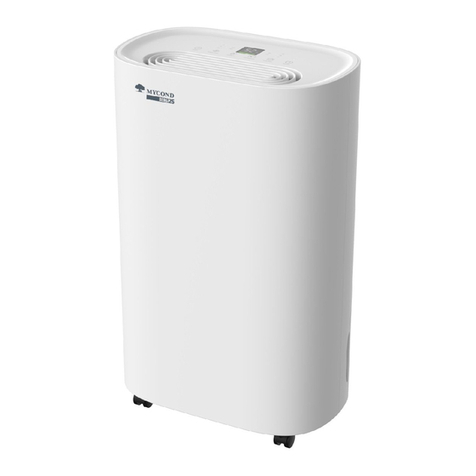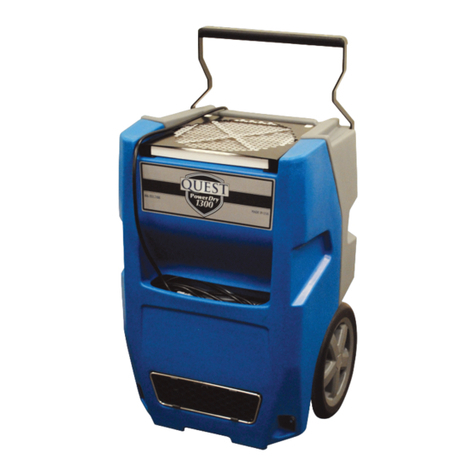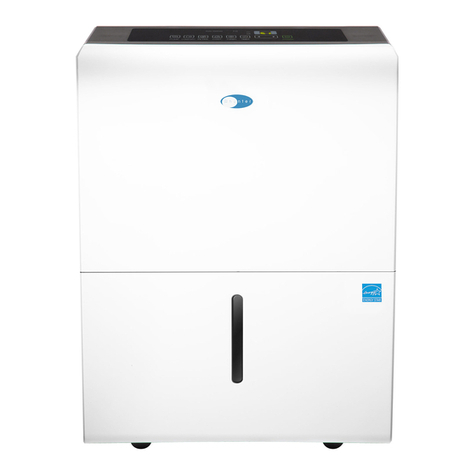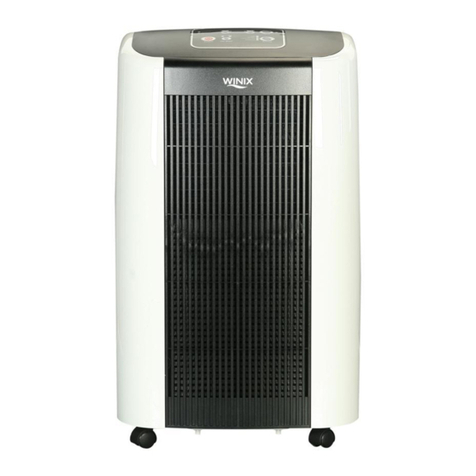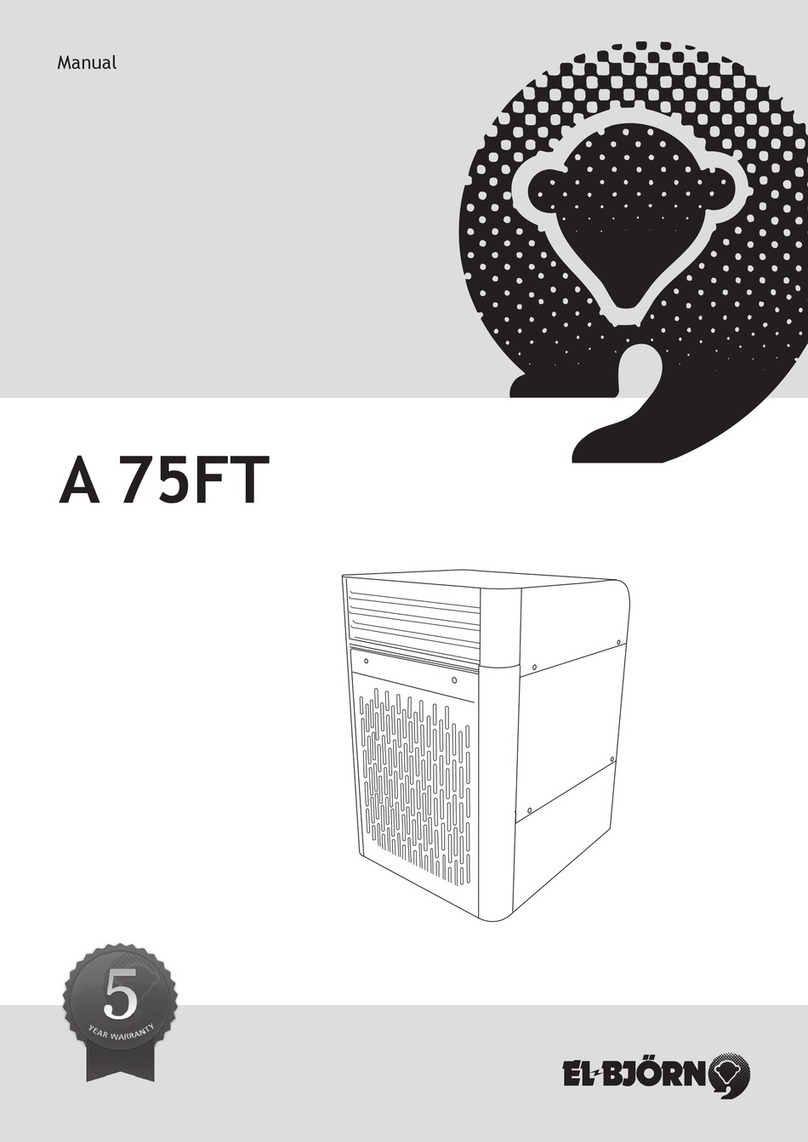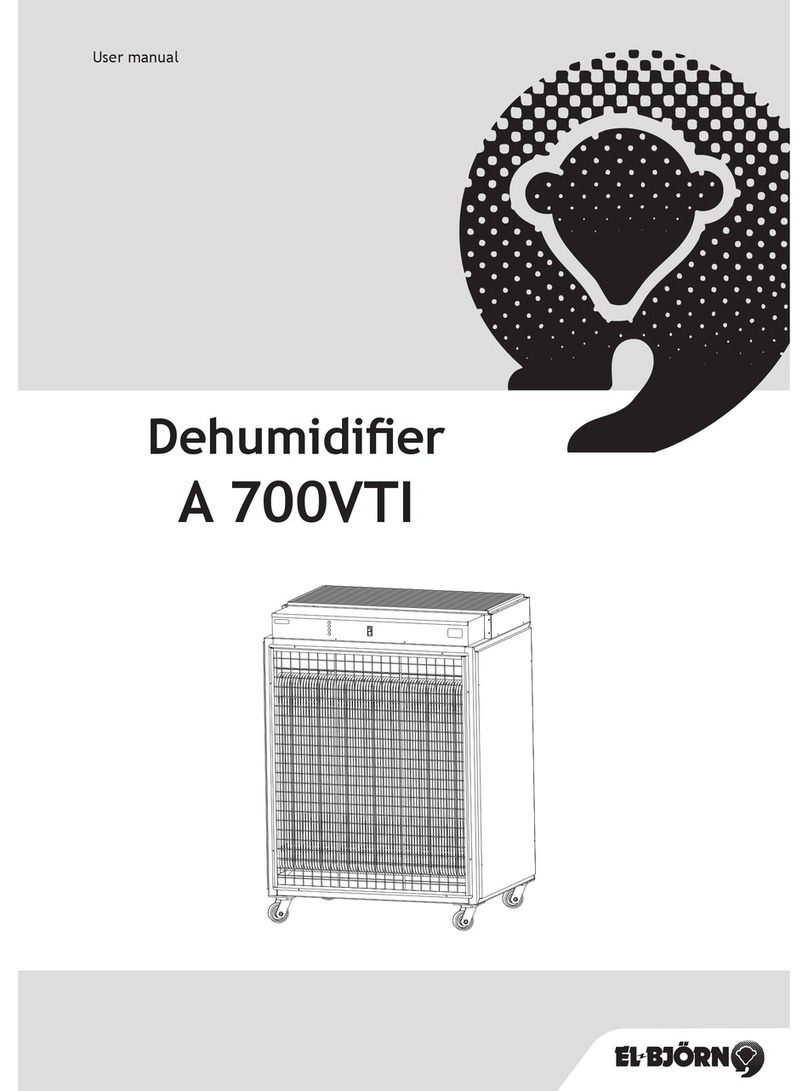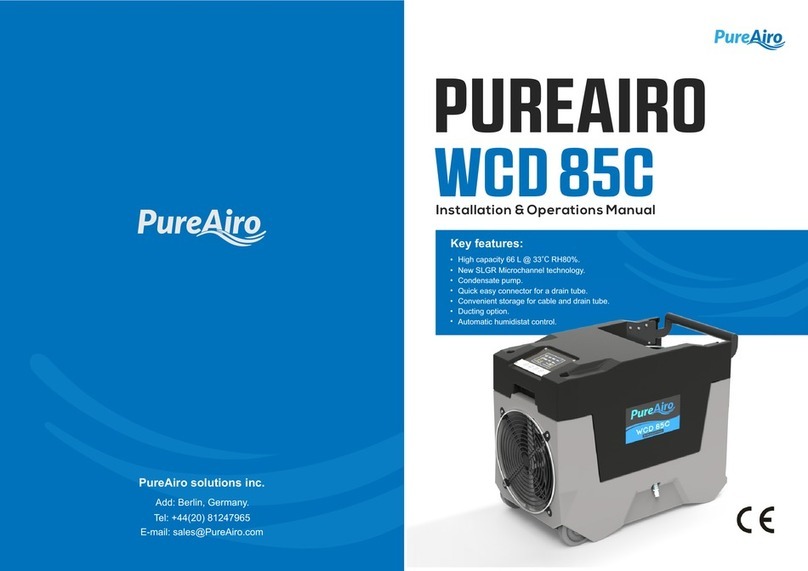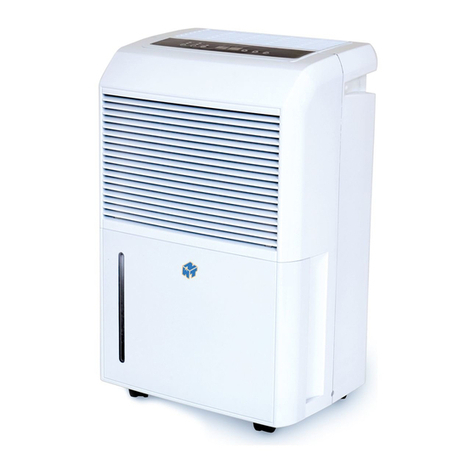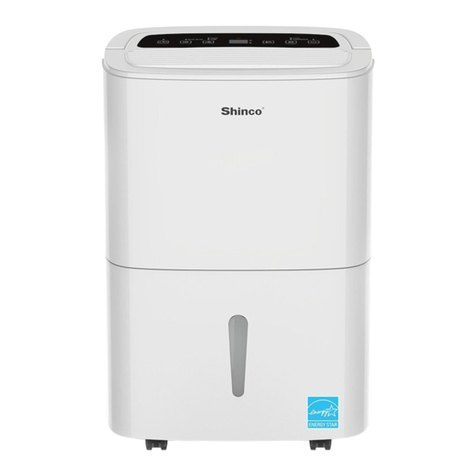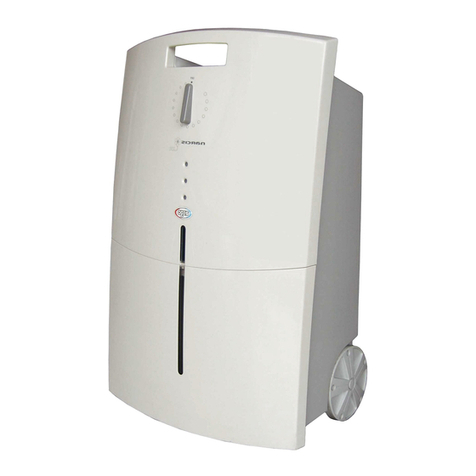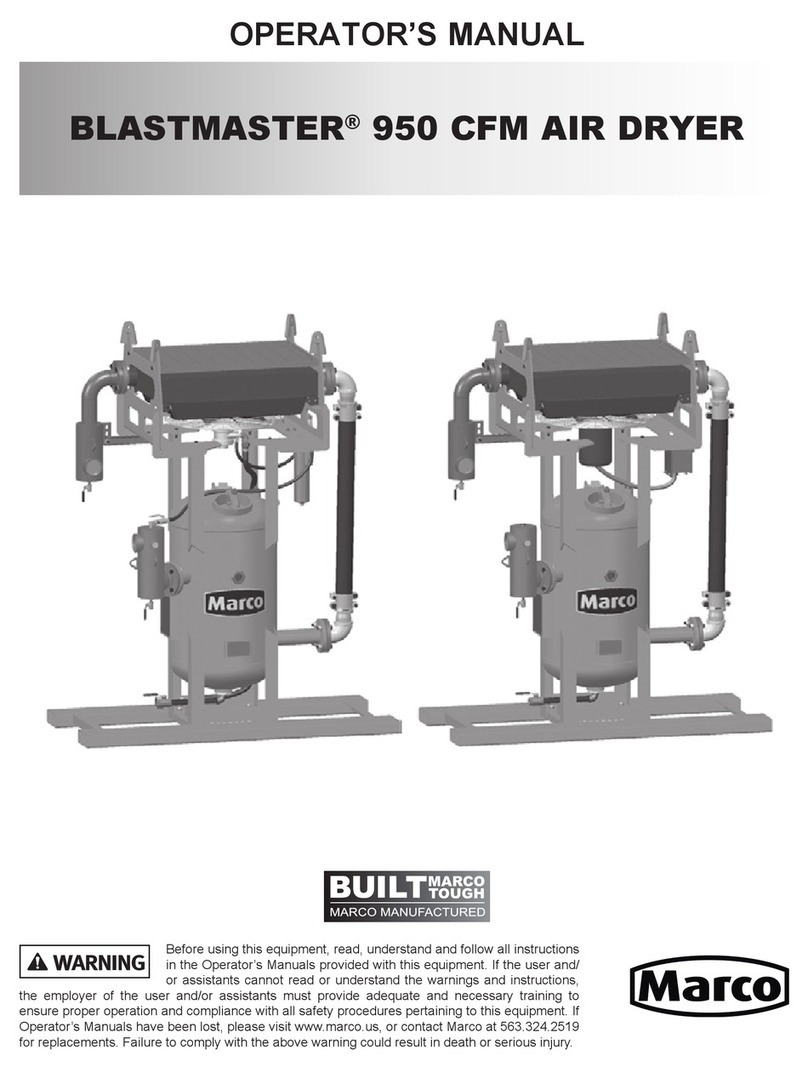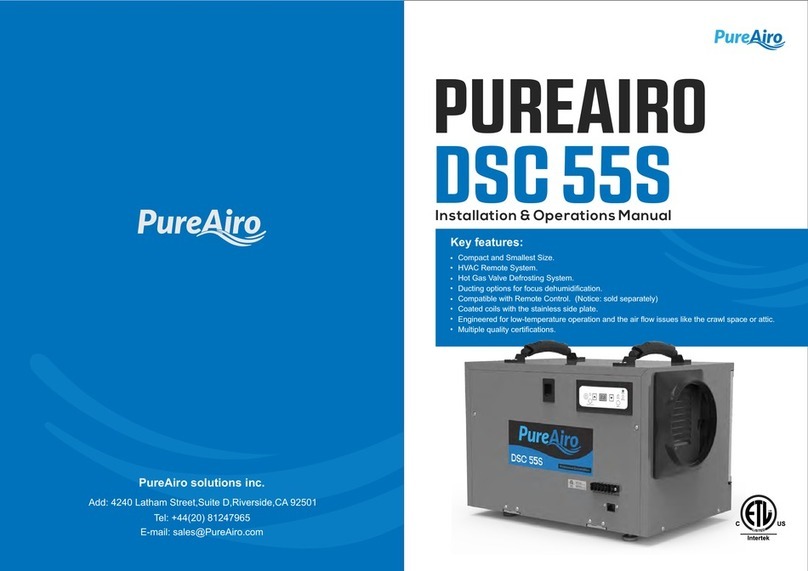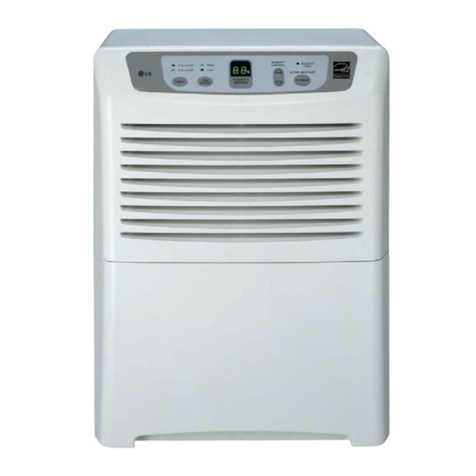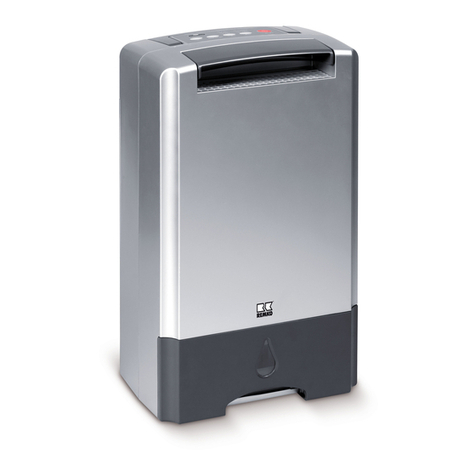When ordering accessories, always specify the
following information:
• Type
• Serial number
This information is displayed on the dehumidier’s
type plate.
Pos Page Designation Quantity Item No.
3 7 Drying pipe, L=2500 mm 12 KL603115
3 7 Drying pipe, L=3000 mm 10 KL603106
4 7 Base pipe, L=1250 mm 1 KL603112
4 7 Base pipe, L=2000 mm 1 KL603100
4 7 Base pipe, L=2500 mm 1 KL603109
8 6 Anti-tip device 2 KL503210
9 6 Clamb connection 1 KL602070
10 6 Adjustable foot 4 KL503251
12 6 Type plate 1 SE9003-TR
15 6 Sticker “Do not cover” 1 KL604204
6 Cable gland M25 2 1477684
6 Nut for cable gland M25 2 1477633
6 Cable gland M16 1 1477682
6 Nut for cable gland M16 1 1477631
AEV 6, 7 Evaporator 1 KL400150
QF1 7, 8, 9 Therminal overload relay 1 3236515
E 7, 9 Heater, 1330 W 3 KL305040
FT 7 Dryer lter 1 KL401211
GT1 6, 9 Thermostat 1 KL304125
GT2: 1,2 9 Overheating protector 2 KL304236
GT3 6, 9 Overheating protector 1 KL304235
LP 6, 9 Low pressure control 1 1416580
K1-K3 6, 9 Contactor 3 3230604
KD 7 Condenser 1 KL400152
M1 7, 9 Radial fan 1 KL300303
Capacitor 7 uF (for radial fan) 1 KL300302
Capacitor 30 uF (for radial fan) 1 KL503252
M2 6, 9 Compressor 1 KL410110
SD 7, 8 Throttle, 1000 mm 2 KL405001
A 7, 8 Accumulator 1 KL401010
X1 6, 9 Terminal block, 2x2,4/6 mm white/grey 8 2930399
X1 6, 9 Terminal block, 2x2,4/6 mm blue 3 2930401
X1 6, 9 Terminal block, 2x2,4/6 mm yellow/green 2 2930402
Accessory
14 6 Filter cassette 2 -pack - E8745030
14 6 Filter cassette 6 -pack - E8745031
16 6 Hanger for pipe assembly, laundry hanger - E8745058
S1 6,13 Timer with mechanical upward adjustment 0-4 hrs - E8745050
S1 6, 13 Timer, electronic A 150 F/R - E8745051
S1 - Timer, electronic incl. hygrometer - E8745053
- - Transformer, 400/230V 300VA - KL303005
- 12 1 Circulation fan CF400V drying room - E8745055
- 12 1 Circulation fan CF230V drying room - E8745056
- Pipe system 2.5x2.5 M - E8745040
- Pipe system 2.5x3.0 M - E8745041
- Pipe system 2.0x3.0 M - E8745042
SPARE PARTS/ACCESSORIES
- 18 -
Pos indicates the position of the part in the gures.
Page indicates the page where the relevant gure is
shown.
Quantity species how many units of each part the
humidier contains




















